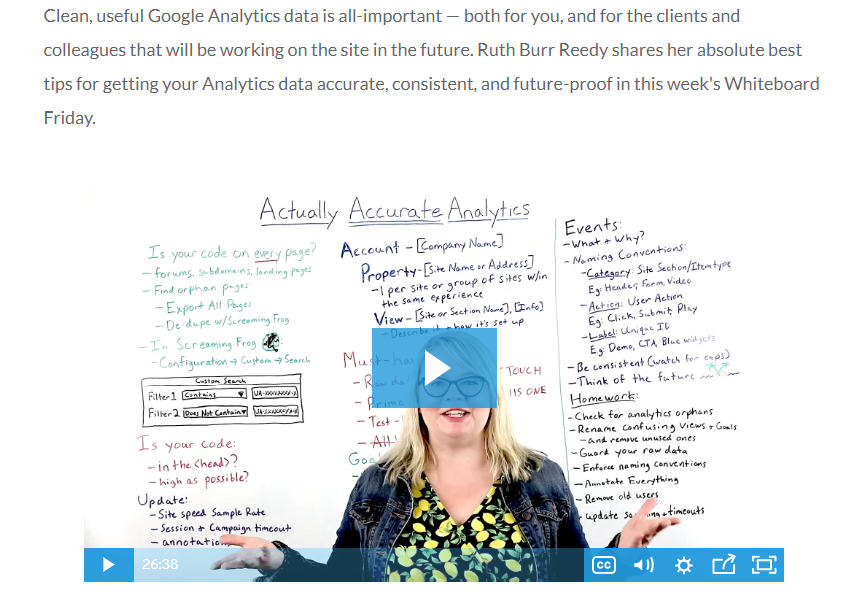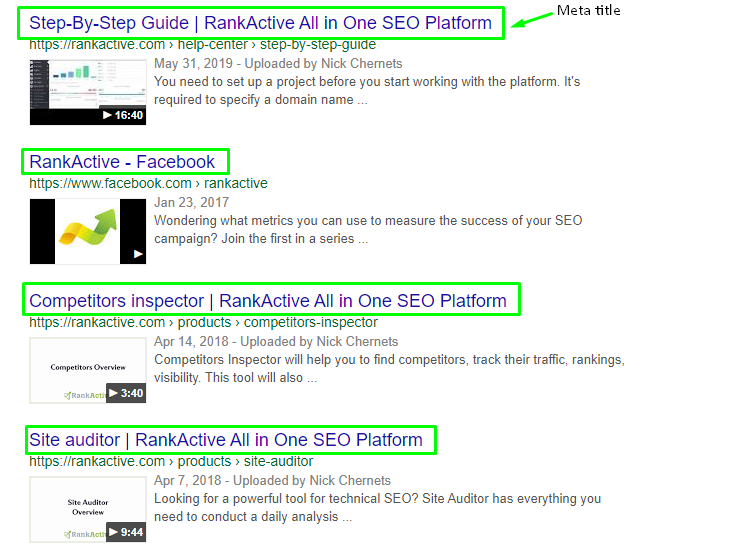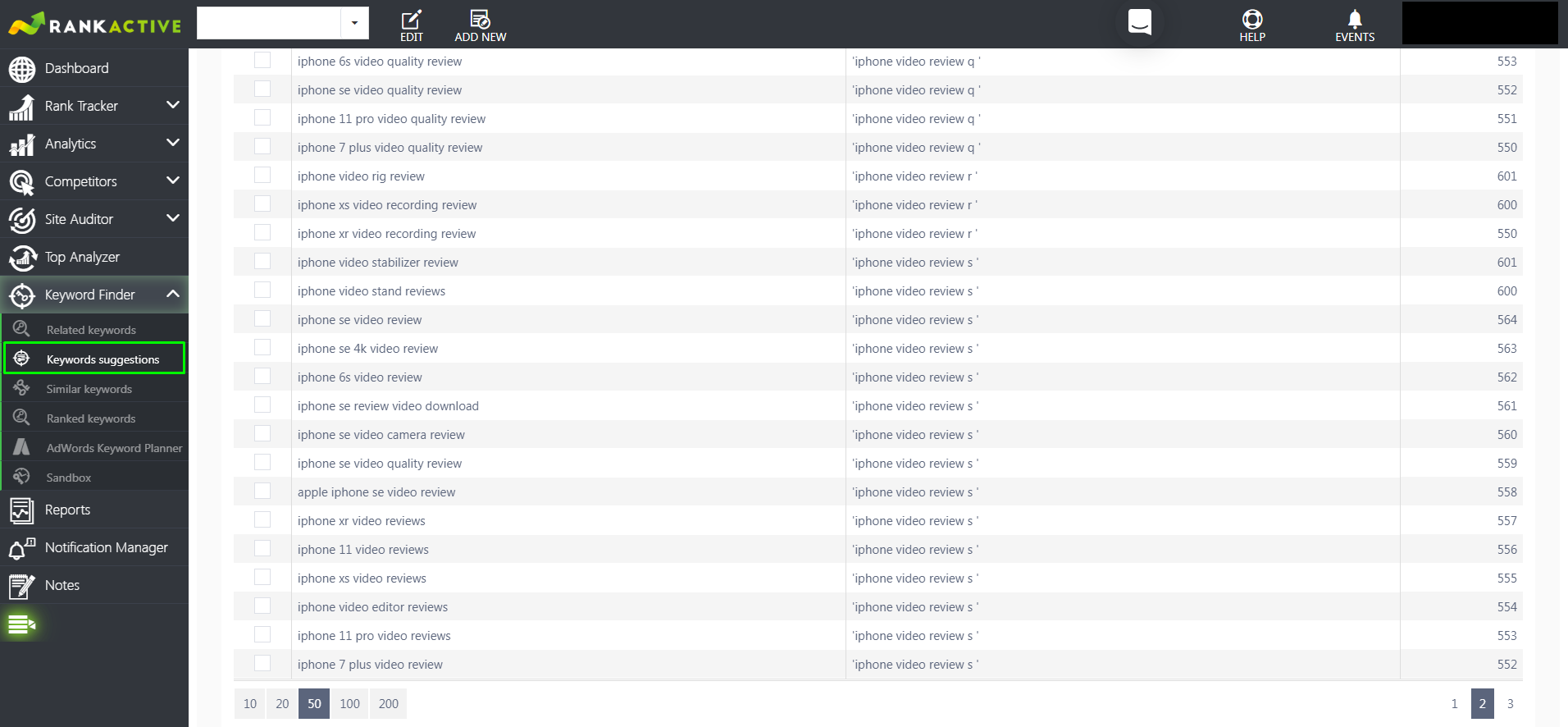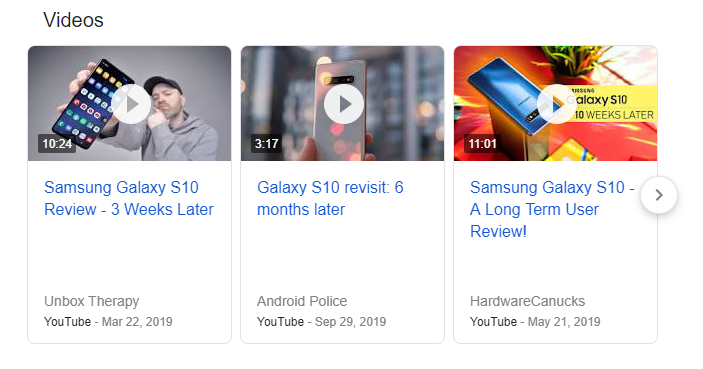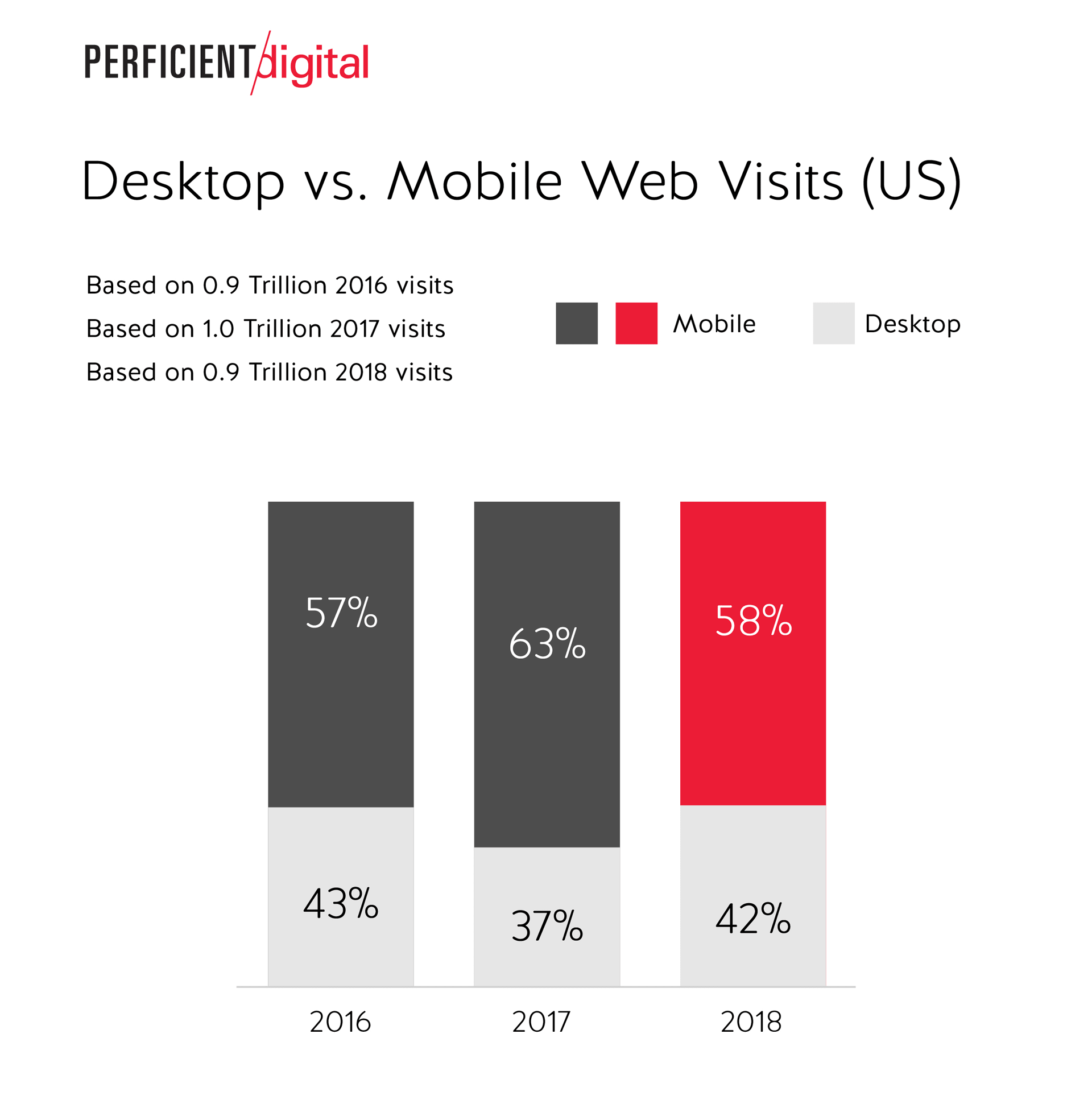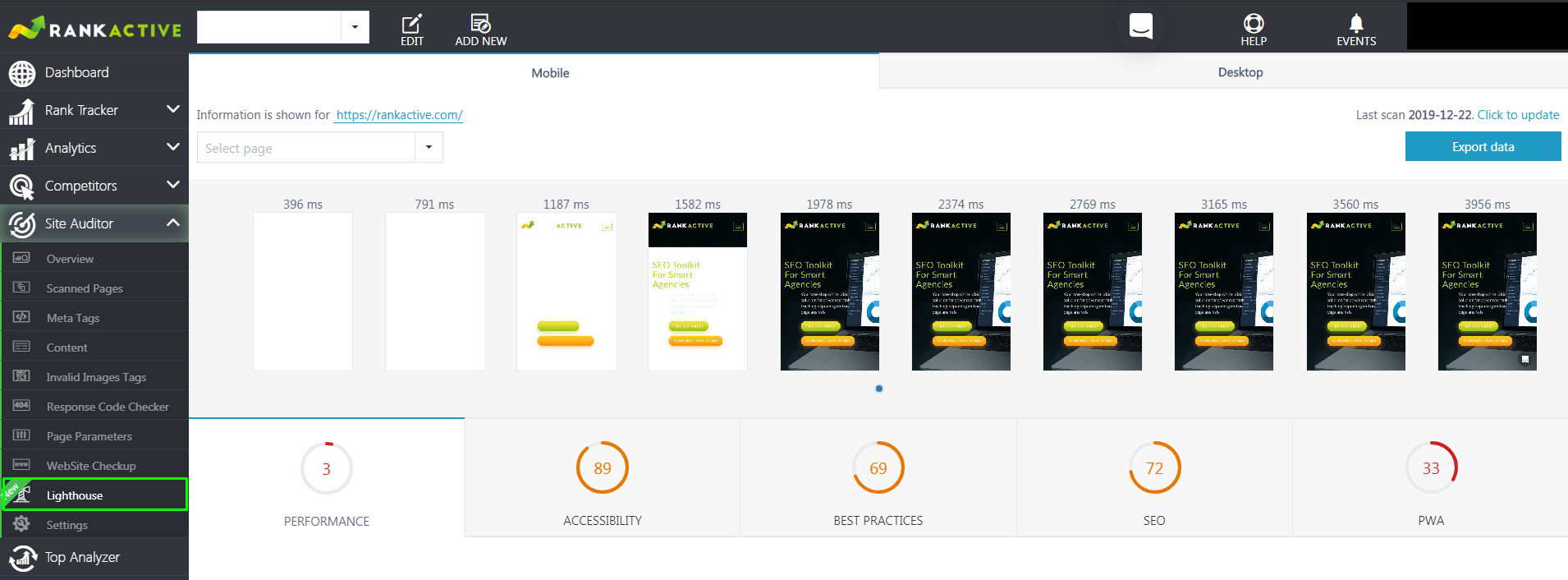How to Leverage Video Content in Your SEO Strategy
3 January 2020 Leave a comment ALL-HANDS SEO, CONTENT MARKETING, ON-PAGE SEO
The first and foremost, people are visual beings. Any marketer keeps it in mind when creating a digital marketing strategy. Videos are the most entertaining and understandable way to explain anything you want to say. Should you consider them as your next marketing effort? The answer is in plain view.
Videos are everything you want them to be: they build emotional connections with a brand, get viral, stuck in people’s heads, and make your products notable. But for marketing, one good-quality video is not enough – it should follow SEO rules, and we are here to tell you about them.
Videos in your content strategy: how to use and where to publish them – we are gathering all you want to know in this guide.
Why Should You Consider Using Video Content for SEO?
There are three main goals that you can achieve using videos for SEO:
- Increasing conversion rates
One of the use cases published by EyeView demonstrates that conversion can rise up to 86% if a web page includes video content.
This outstanding result is easy to explain: videos catch the user’s eye. We are ready to stay a little longer and perhaps visit a website once again if we can watch videos instead of reading long articles. It might work for many users.
- Gaining more backlinks
There are numerous platforms out there where you can publish your video. But that is not all. If a video is entertaining or engaging, people would like to share it, creating more and more backlinks leading to your site.
- Spreading a word about the brand
This point is a consequence of the previous one. Backlinks not only bring you more traffic but also get people to know your brand better. And even more: some videos become viral on the web, and your video marketing campaign may be known by people all over the Internet, beyond your target audience.
What Type of Videos Should You Consider for Your Content Strategy?
Why are you thinking about video content right now, what do you want to tell or demonstrate? This is the first question you should ask yourself, and the answer reflects your current goals. Depending on the goal, there are four subjects of videos you create:
- Business value. The idea of such videos is demonstrating how exactly your business stands out. It can be several shots of the production process, client testimonials, interviews with employees or product creators. In other words, you demonstrate why your company is better than the competitors and how customers can benefit from it.
- News and updates. This type of video can be applied in any industry. For example, you have launched a new complex product or added new features to the existing one – a video is the best way to demonstrate the updates.
Or if your company organizes a big event, you can tell why people should join and how they can do it. By telling people the news, you automatically become closer to them.
- The product’s workflow. If you launch a brand new product, you should show all of its advantages – videos are the best way to do that. Reveal as many details as you can and prove customers they should buy this product. In this case, videos become an effective selling instrument.
- Industry-related content. These videos do not necessarily concern your brand – they usually touch on many subjects from your industry. By carefully studying the news and evergreen subjects, you create videos that make you an industry expert for the audience. The high level of trust brings your brand more upsells and loyal customers – this is what you need for steady growth.
What Platforms Are the Best to Publish Videos?
The list of platforms to publish your videos can be rather long, but there are three main points that should be on the list of any marketer. We are going to review each of them.
1. Your Own Website
As simple as it is. Several high-quality videos can enhance static content on any website. By static content, we mean web pages and blog posts. There are several great examples.
After a home page, “About Us” is a great place to tell about your brand. The creators of the Yellow Leaf Hammocks website had the same idea and put a video above the fold showing the production process of their product:
Another example is a page with job opportunities. Have you ever visited this page on Soundcloud? You definitely should. Instead of the photos of the office and working process, we see a dynamic image:
Videos can also become the most engaging component of your company’s blog. SEO experts must be familiar with MOZ’s blog and its Whiteboard Friday. This is a separate blog section where experts use, well, a whiteboard to explain a subject. The latest article is about accurate analytics, and here is a video:
Now, let’s get outside your website’s borders.
2. YouTube
This option is straightforward: YouTube is the most popular and widely-known video platform on the Internet. YouTube is a part of Google’s product package, so its popularity is not a surprise.
We used Every Second to see YouTube’s stats. In just 25 minutes, there were over a million videos watched. In a minute – more than 500 videos uploaded. These numbers seem overwhelming at first, and marketers realize that this is a huge field for their opportunities. But to stand out, you have to optimize videos properly. Continue reading, and we will tell you how exactly you can do it.
3. Social Media
And another step forward – this time, towards social media. Facebook or Twitter are the best places to get found and known by the broad audience. People tend to search for info on social media more and more often, which makes search optimization a vital necessity.
But overcrowding is the same problem as in the YT world: more people, more brands, more content every year. Videos seem to be the most obvious way to maximize your marketing efforts.
6 Tips to Optimize Your Video Content
You have an idea for a new video, you know how and where to film it, the last thing left is to properly share it with the world. By this, we mean the following SEO rules that will help you stand out.
Tip 1: Provide Metadata
When it comes to metadata, it works the same for static pages and video files. What do we usually need first? It is a meta title and meta description.
- A meta title tag is an HTML element that specifies the file’s title for search engines. This tag should describe precisely the page or file’s content, so treat it seriously.
- A meta description tag is another HTML element that provides a brief summary of a page or file. Meta description usually contains up to 160 characters and is displayed in SERPs.
Now search engines can analyze your content way better: a title, description, and other tags let them understand what a video is about, and, subsequently, you have more chances to rank higher with this content.
On YouTube, there are 4850 characters that you can add to the description – this is a great place to put as much information as you need to be understood and, more importantly, to be found.
And here is another tip from technical SEO: you can use JSON-LD (JavaScript Object Notation for Linked Data). It is similar to Microdata and RDFa but easier to use – you simply have to paste the markup in the HTML doc.
Why should you do that? JSON-LD helps structure the elements on the page so the search engine could “read” and understand it better. As you might have guessed, it concerns Schema.org – a joint effort of several search engines to build a vocabulary for structured data.
However, there are several video hosting providers that have structured pages by default, and you do not have to structure data by yourself. The examples of such platforms, along with YouTube and Vimeo, are Wistia, Dailymotion, Vidyard, etc.
Tip 2: Transcribe Videos
The first and second tips are strongly connected, but this one requires more time. Google crawlers do not understand motion and animations – they need text to figure out the content’s topic. If you provide captions and a transcription, your video is straightforward for Google, and there are more chances your audience will see it.
YouTube works similarly: captions improve user experience and tell crawlers everything about your video.
If you publish videos on social media, captions here are a way for people to fully comprehend the content with muted sound. This option is vital for many groups of users: hard-of-hearing people, those who watch videos at public places, and foreign-language speakers.
Tip 3: Conduct Keyword Research
So, you have written tags, captions, and a YouTube description. What are the chances that users and crawlers will notice it any time soon? Keywords become your saviors to make it faster.
Most people click on Google Search to find trended queries connected with the video’s topic. But this way is very limited: there are only ten options immediately provided by Google. If you want to grow and develop your video marketing strategy, use advanced tools like RankActive.
What you are looking for is our Keyword Finder. Here you get five different sources for keyword research, and it would work perfectly for your videos. Let’s say you want to get ideas from Google Autocomplete – use Keywords suggestions for that. We have typed “iphone video review”, and here are the results:
Google does not require using a bunch of keywords here and there – it is always about high-quality content. But if you use several related keywords and write accurate captions and descriptions, crawlers will “read” your video and users will find it.
Do not close RankActive now – you will need it a few tips later.
Tip 4: Add an Eye-Catching Thumbnail
Now people can find you, but this is only the beginning. Will they eventually click on your video for more information? A catchy thumbnail would help a lot.
Thumbnails appear first in the search results, so you should spend some time to make them “speak” to your audience. If it is a vivid custom image that reflects the subject of the video, you will probably get more clicks than your competitors.
To create a perfect thumbnail, start with these simple rules:
- Use graphics in high resolution, so a thumbnail does not get pixelated.
- Add close-ups that can be easily seen even on a small thumbnail.
- Use vivid colors and try to align them with your brand’s identity.
- Do not ever create click-bait thumbnails if you care about the content’s reputation and follow ethical SEO guidelines.
- Do not put any significant graphic elements in the lower corners of the image because some platforms display the video’s duration there.
- Use the 16:9 aspect ratio.
Tip 5: Create a System
The more videos you create, the more order they require. Be it your own website with informational videos or a YouTube channel, you should structure them accurately.
Video sitemap is for those who publish a lot of videos on the company’s website. It gives Google a general idea of how your content is structured and helps the search engine to figure out what pages contain videos.
Playlists are a YouTube thing. First, they help users find any relevant content on your channel, but that is not all. The crucial feature of YT playlists is autoplay. All videos with a common subject are played automatically – it boosts the number of views and engagement level. Strictly speaking, no efforts required from users to grasp a huge piece of your content.
Tip 6: Go Mobile
Mobile-first indexing is not something new in the SEO world. This practice is widely known and becoming crucial for web optimization in general, not only for the video content. And it is not surprising – just have a look at the recent statistics:
In the last three years, mobile traffic was ahead of desktop, so adapting content for smartphones is a necessity on the competitive market.
Such platforms as YouTube and Vimeo have their own mobile apps, so your goal, for now, is to make sure that each page of your site is mobile-optimized.
Remember, we asked you not to close the RankActive tab? Here is why. With the Lighthouse feature, you can quickly check mobile responsiveness as well as a bunch of useful metrics. It looks similar to Google’s tool, but you do not have to switch between Google Adwords and Lighthouse to optimize your videos.
Go Visual, Go Viral
What if your customers do not have time to read long articles? Or maybe words are not enough to describe a new feature or a product? Sooner or later, marketers face these limits and start considering video marketing.
YouTube and Vimeo have proved to us how much time people are ready to spend watching videos. Viewers are looking for explanations, more detailed product reviews, and the latest news. You can create videos to meet any of these demands – just keep SEO in mind.
Metadata and mobile optimization, captions and keywords – all of it are necessary to benefit from every video you upload. Advanced SEO tools like RankActive speed up the optimization process and let you focus on the creative part. Are you going to start with the keyword research? Sign up here to continue.
Tags: content, content management, Keyword Finder, Lighthouse, mobile-first indexing, SEO for videos, video, youtube
Like this article? There’s more where that came from.
- 5 Questions to Ask Yourself Before Paying for Rank Tracking Software
- 5 Serious Mistakes Beginner SEOs Make and How to Fix Them
- Why We Use Google’s New Link Attributes and You Should Too
- Title and Description in 2021: Why Google Rewrites SEOs’ Meta Tags
- What We Should Learn From Google’s “About This Result” Feature





